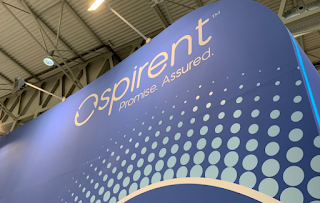The FCC commenced the next of its 5G auctions, with bidding on spectrum in the upper 37 GHz, 39 GHz, and 47 GHz bands (Auction 103). The FCC is making 3,400 MHz of millimeter-wave spectrum available through this auction.
Auction 103 will offer 14,144 Upper Microwave Flexible Use Service licenses in the Upper 37 GHz, 39 GHz, and 47 GHz bands, and the licenses will be based on Partial Economic Areas (PEAs). Category M/N consists of blocks in 37.6 – 40 GHz, including 10 blocks (Blocks M1–M10) in the Upper 37 GHz band and 14 blocks (Blocks N1–N14) in the 39 GHz band; and Category P consists of 10 blocks (Blocks P1–P10) in 47.2 – 48.2 GHz, the 47 GHz band.
Current auctions are posted here: https://www.fcc.gov/auction/103/round-results
 “Today’s spectrum auction shows that America is continuing to lead the world in 5G, the next generation of wireless connectivity. These airwaves will be critical in deploying 5G services and applications. Auctioning the 39 GHz and upper 37 GHz bands together presents a critical opportunity for 5G deployment as it represents the largest amount of contiguous spectrum available in the millimeter-wave bands," stated FCC Chairman Ajit Pai.
“Today’s spectrum auction shows that America is continuing to lead the world in 5G, the next generation of wireless connectivity. These airwaves will be critical in deploying 5G services and applications. Auctioning the 39 GHz and upper 37 GHz bands together presents a critical opportunity for 5G deployment as it represents the largest amount of contiguous spectrum available in the millimeter-wave bands," stated FCC Chairman Ajit Pai.
“Notably, we’re setting up the Upper 37 GHz, 39 GHz, and 47 GHz auction to be our second-ever incentive auction. This one will be different from the broadcast incentive auction that Congress authorized years ago, but it’ll have the same worthy goal: clearing or repacking existing licensees to make spectrum as useful as possible, boosting competition and benefiting consumers.
“Pushing more spectrum into the commercial marketplace is a key component of our 5G FAST plan to advance American leadership in the next generation of wireless connectivity. Earlier this year, we concluded our first-ever high-band 5G auctions of the 28 GHz and 24 GHz bands. Next year, we look forward to initiating two mid-band spectrum auctions—the 3.5 GHz auction on June 25, 2020, and an auction in the 3.7-4.2 GHz band in the latter part of 2020. These and other steps will help us stay ahead of the spectrum curve and allow wireless innovation to thrive on our shores.”
Auction 103 will offer 14,144 Upper Microwave Flexible Use Service licenses in the Upper 37 GHz, 39 GHz, and 47 GHz bands, and the licenses will be based on Partial Economic Areas (PEAs). Category M/N consists of blocks in 37.6 – 40 GHz, including 10 blocks (Blocks M1–M10) in the Upper 37 GHz band and 14 blocks (Blocks N1–N14) in the 39 GHz band; and Category P consists of 10 blocks (Blocks P1–P10) in 47.2 – 48.2 GHz, the 47 GHz band.
Current auctions are posted here: https://www.fcc.gov/auction/103/round-results
 “Today’s spectrum auction shows that America is continuing to lead the world in 5G, the next generation of wireless connectivity. These airwaves will be critical in deploying 5G services and applications. Auctioning the 39 GHz and upper 37 GHz bands together presents a critical opportunity for 5G deployment as it represents the largest amount of contiguous spectrum available in the millimeter-wave bands," stated FCC Chairman Ajit Pai.
“Today’s spectrum auction shows that America is continuing to lead the world in 5G, the next generation of wireless connectivity. These airwaves will be critical in deploying 5G services and applications. Auctioning the 39 GHz and upper 37 GHz bands together presents a critical opportunity for 5G deployment as it represents the largest amount of contiguous spectrum available in the millimeter-wave bands," stated FCC Chairman Ajit Pai.“Notably, we’re setting up the Upper 37 GHz, 39 GHz, and 47 GHz auction to be our second-ever incentive auction. This one will be different from the broadcast incentive auction that Congress authorized years ago, but it’ll have the same worthy goal: clearing or repacking existing licensees to make spectrum as useful as possible, boosting competition and benefiting consumers.
“Pushing more spectrum into the commercial marketplace is a key component of our 5G FAST plan to advance American leadership in the next generation of wireless connectivity. Earlier this year, we concluded our first-ever high-band 5G auctions of the 28 GHz and 24 GHz bands. Next year, we look forward to initiating two mid-band spectrum auctions—the 3.5 GHz auction on June 25, 2020, and an auction in the 3.7-4.2 GHz band in the latter part of 2020. These and other steps will help us stay ahead of the spectrum curve and allow wireless innovation to thrive on our shores.”















